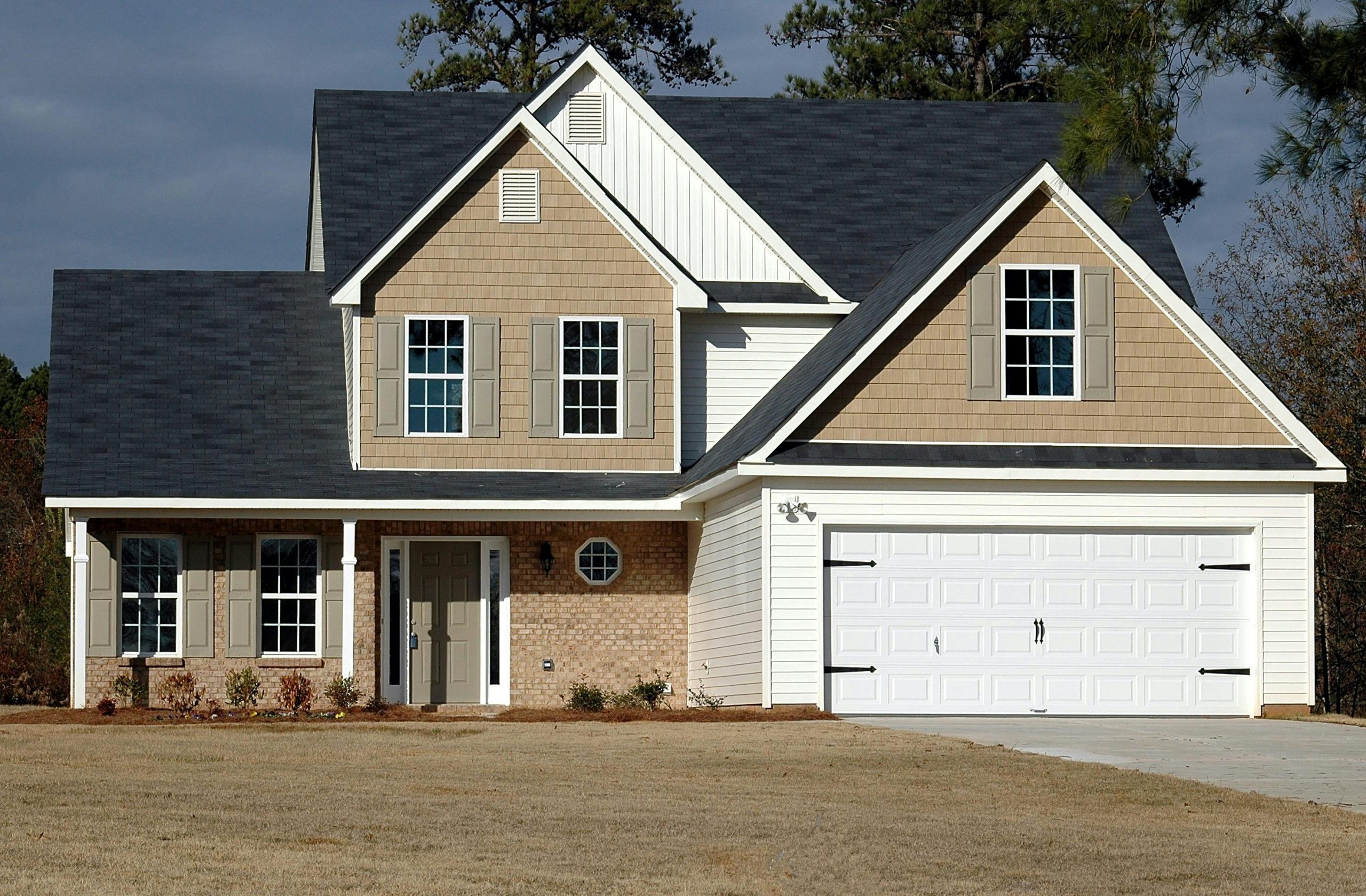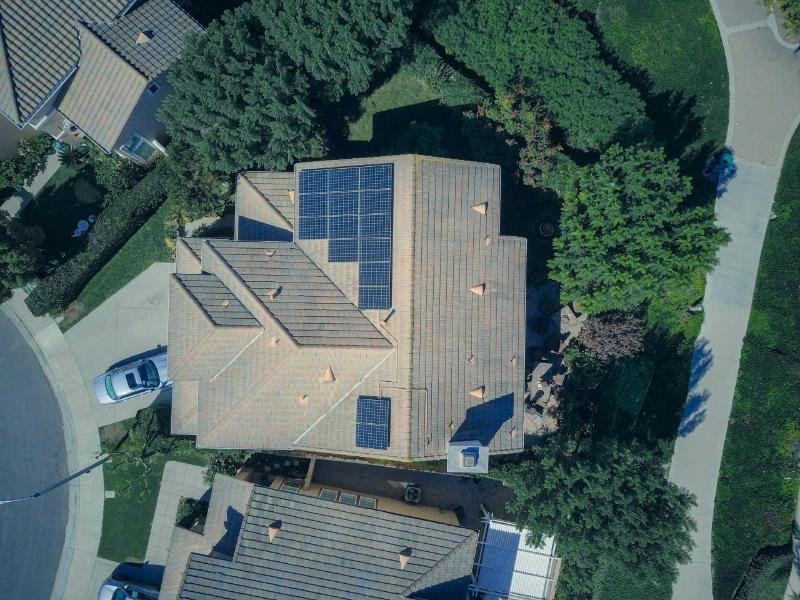
When choosing a roof, most homeowners think about cost, style, and durability. But if you’re trying to live more sustainably, there’s another important factor to consider: your roof’s carbon footprint.
In this article, we’ll compare metal roofs vs shingles to find out which option is better for the environment. We’ll look at energy efficiency, production impact, recyclability, lifespan, and more—so you can make an informed, eco-friendly decision for your home.
What Does “Carbon Footprint” Mean in Roofing?
Before diving into comparisons, it’s worth clarifying what we mean by carbon footprint in the context of roofing materials.
A roof’s carbon footprint includes:
- Manufacturing emissions: Energy and resources used to produce the material
- Transportation: Emissions created getting the material to your home
- Installation: How labor- or energy-intensive it is to install
- Longevity: How often it needs replacing (which multiplies the emissions over time)
- End-of-life impact: Whether the material ends up in a landfill or gets recycled
Now let’s see how metal roofs and asphalt shingles stack up.
How Are Asphalt Shingles Made—and What’s the Environmental Impact?

Asphalt shingles dominate residential roofing in North America. They’re crafted in several steps:
- Base layer: Typically fiberglass or felt mat.
- Asphalt coating: This petroleum-derived layer bonds to granules and protects the mat.
- Mineral granules: Applied atop the asphalt for durability, UV protection, and aesthetics.
Environmental Downsides of Asphalt Shingles
- Fossil fuel–based: Asphalt is derived from petroleum, so shingle production heavily relies on non-renewable oil.
- High emissions: The manufacturing process emits substantial CO₂ and other greenhouse gases.
- Short lifespan: Most shingles last just 15–30 years—requiring multiple replacements over a home’s lifetime.
- Limited recycling: Though recyclable, the majority end up in landfills due to logistical and economic barriers.
- Massive waste generation: The U.S. produces 11–13 million tons of asphalt shingle waste every year, as estimated by the Environmental Protection Agency (EPA).
That’s a staggering amount of roofing material—mostly ending up in landfills, taking centuries to break down, and contributing significantly to environmental impacts.
Are Metal Roofs More Eco-Friendly?
Metal roofs—commonly made from steel, aluminum, zinc, or copper—are often seen as a premium choice due to their sleek appearance and durability. But beyond aesthetics and longevity, they also offer significant environmental advantages. So, how do they compare from a sustainability perspective?
Key Sustainability Advantages of Metal Roofs
1. High Recycled Content
Many metal roofing systems are manufactured using a substantial amount of pre- and post-consumer recycled metal, reducing the demand for virgin materials. Here’s a breakdown of common materials:
- Aluminum roofing: Often made from up to 95% recycled content, especially when sourced from recycled beverage cans and scrap
- Steel roofing: Typically contains 25–35% recycled content, though this can be higher depending on the supplier
- Copper and zinc roofs: Can also contain recycled content, though they are more niche and expensive.
By opting for a roof with high recycled material content, you help reduce mining, conserve raw materials, and lower the energy used in production.
2. 100% Recyclable at End of Life
Unlike asphalt shingles—which are rarely recycled and often landfilled—metal roofing panels are 100% recyclable when removed. They don’t degrade in quality after recycling, meaning the materials can be reused indefinitely without losing strength or performance.
- This “cradle-to-cradle” recyclability keeps metal out of landfills and in circulation.
- Many roofing contractors will even salvage and sell the removed panels to metal recyclers, making proper disposal more likely.
3. Lightweight Material = Lower Transport Emissions
Metal roofing is significantly lighter than asphalt shingles, especially in the case of aluminum and some standing seam panels. This has several environmental benefits:
- Less fuel required for transport from manufacturer to job site
- Fewer shipping trips due to efficient panel coverage
- Lower structural requirements, meaning fewer construction materials overall (e.g., roof decking or truss reinforcements)
These weight and coverage efficiencies reduce the carbon footprint associated with distribution and installation.
4. Exceptional Longevity Reduces Waste
Metal roofs are some of the longest-lasting roofing options on the market:
- Galvanized steel roofs: Last 40–60 years on average
- Aluminum roofs: Can reach 50–70 years
- Zinc and copper roofs: Often last 80+ years, with minimal degradation
Compare this to asphalt shingles, which typically require replacement every 15–30 years. Fewer replacements mean:
- Fewer emissions from manufacturing and transportation
- Less frequent removal and disposal
- Less raw material demand over a home’s lifespan
In other words, longevity directly contributes to a lower cumulative carbon footprint over time.
5. Cool Roof Properties and Energy Efficiency
Metal roofs are known for their solar reflectivity, making them excellent choices for cool roof systems—especially in hot and sunny climates.
- Unpainted metal roofs naturally reflect more sunlight than shingles
- Painted or coated metal roofs (with cool pigments) can reflect up to 70% of solar radiation
- Because metal roofs reflect more sunlight than conventional shingles, they can help keep roof surfaces up to 50°F cooler on hot days. This can ease the strain on your cooling system and reduce overall energy use in warm climates.
Reducing the load on air conditioners means fewer greenhouse gas emissions from energy production, particularly in regions powered by fossil fuels.
Bonus Benefit: Compatibility With Solar Panels
Metal roofs—especially standing seam panels—are ideal for solar panel installations:
- Clamp-on attachments don’t require roof penetration, preserving material integrity
- Long lifespan matches or exceeds that of solar panels, so no need for premature re-roofing
- Their reflective nature can help boost panel efficiency in some cases
If you’re planning a solar-ready home, metal roofing is one of the most environmentally compatible choices.
Which Roof Type Lasts Longer?

Longevity plays a major role in reducing environmental impact. The fewer times you have to replace a roof over your home’s lifespan, the lower the total emissions.
| Roofing Type | Average Lifespan | Typical Replacements in 100 Years |
| Asphalt Shingles | 15–30 years | 3–5 replacements |
| Metal Roofing | 40–70 years | 1–2 replacements |
Every time you replace a shingle roof, you’re creating emissions through production, transportation, labor, and waste. Metal roofing wins this round handily.
Which Roof Saves More Energy?
Energy efficiency doesn’t just affect your bills—it also impacts your home’s carbon output.
Asphalt Shingles and Heat Absorption:
- Tend to absorb and retain heat
- Can raise indoor temps during summer
- Leads to increased air conditioning use
Metal Roofing and Solar Reflectance:
- Reflects up to 70% of solar energy
- Reduces heat transfer into the home
- Helps cut cooling costs by up to 25%
- Some options come with reflective coatings to maximize energy efficiency
If you live in a hot or sunny climate, this difference is even more pronounced. Less AC use = fewer carbon emissions.
Which Is Better for Cold Climates?
You might wonder: doesn’t a roof that reflects heat make your home colder in the winter?
Not necessarily.
While metal roofs do reflect sunlight, the real energy loss in winter typically happens through poor insulation, not roofing material. Proper attic insulation and ventilation are more important than your roof’s heat absorption.
Additionally:
- Snow slides off metal roofing easily, preventing ice dams
- Some metal roofing can be installed over existing shingles, adding an insulating layer and reducing waste
What About Manufacturing Emissions?
Asphalt Shingles:
- Production involves high-temperature processing of asphalt
- Uses non-renewable petroleum
- Energy-intensive, especially when factoring in large volumes produced
Metal Roofing:
- Producing metal from raw ore is energy-intensive
- However, recycled metal requires up to 75% less energy to process
- Long lifespan offsets initial carbon cost
If you choose a roof made from recycled steel or aluminum, your footprint drops considerably compared to virgin asphalt products.
Transportation and Weight: Do They Make a Difference?
Yes—transportation emissions matter, and weight is a big factor.
- Asphalt shingles are heavier, requiring more fuel per mile during delivery
- Metal panels are lighter and cover more area per panel, meaning fewer trips and lower shipping emissions
Over thousands of homes and miles, this adds up.
Can Asphalt Shingles Be Recycled?
Technically, yes. But in practice, only a small percentage actually are.
Challenges include:
- Separation of asphalt from fiberglass or felt base
- Contamination with nails or debris
- Lack of accessible recycling facilities
Meanwhile, most metal roofing is easily recycled at the end of its life, and the scrap has real value. This encourages proper disposal rather than landfill dumping.
Are There Eco-Friendly Options for Both?
Absolutely. If you’re committed to reducing your roof’s carbon footprint, look for:
Eco-Friendly Asphalt Shingles:
- Products labeled as cool roofing or ENERGY STAR-rated
- Recycled-content shingles (rare, but available)
- Local recycling partnerships to divert old shingles from landfills
Eco-Friendly Metal Roofs:
- Pre-painted or coated metal panels for better energy efficiency
- Metal made from high recycled content
- Locally sourced materials to cut down transport emissions
What’s the Verdict? Metal Roof vs Shingles
When it comes to carbon footprint, metal roofing is the clear winner in most categories.
Let’s recap:
| Factor | Asphalt Shingles | Metal Roofing |
| Carbon-intensive to make | Yes | Only if from raw materials |
| Long lifespan | Shorter (15–30 yrs) | Longer (40–70+ yrs) |
| Recyclable | Limited, rarely recycled | 100% recyclable |
| Energy-efficient | Absorbs heat | Reflects heat, lowers cooling |
| Waste impact | Millions of tons annually | Minimal, especially with reuse |
| Sustainable sourcing | Fossil fuel-based | Often made from recycled metal |
Final Thoughts: Choosing the Greener Roof
If you’re replacing your roof and want to reduce your home’s environmental impact, a metal roof is almost always the more eco-friendly choice—especially if:
- It’s made from recycled metal
- You live in a sunny or hot climate
- You plan to stay in your home long-term
- You’re considering solar panels (which pair well with metal roofs)
That said, budget is still a factor. Asphalt shingles are cheaper upfront, and if you choose energy-efficient, cool-rated shingles and recycle them properly, you can still make a more sustainable decision.
Bonus Tip: Don’t Forget the Installation Team
Hiring contractors who follow sustainable practices—like minimizing waste, reusing underlayment, or recycling old materials—can make a big difference too.
Always ask:
- Do you recycle the old roof?
- Do you use energy-efficient materials?
- Can you install solar-ready systems?
Ready to Go Green With Your Roof?
Whether you choose asphalt shingles or a metal roof, knowing the environmental impact of each option helps you make a better decision for your home and the planet.
For maximum carbon savings, opt for a metal roof made from recycled materials, and make sure your home is properly insulated to get the full benefit.

